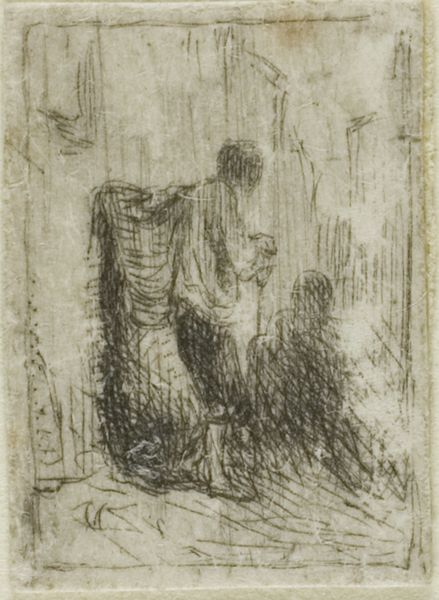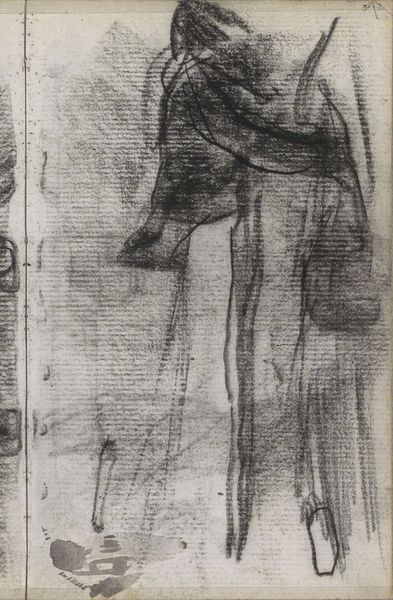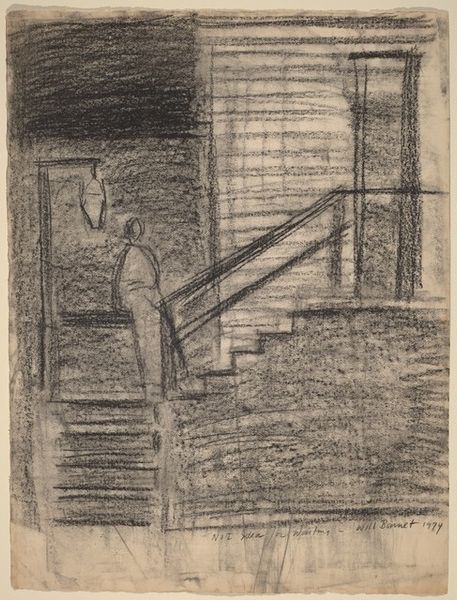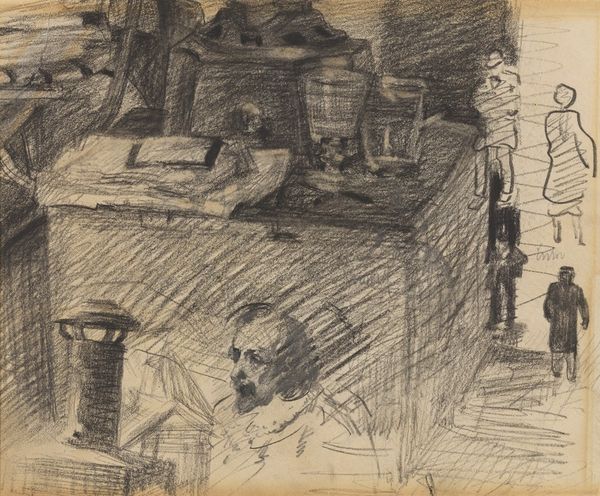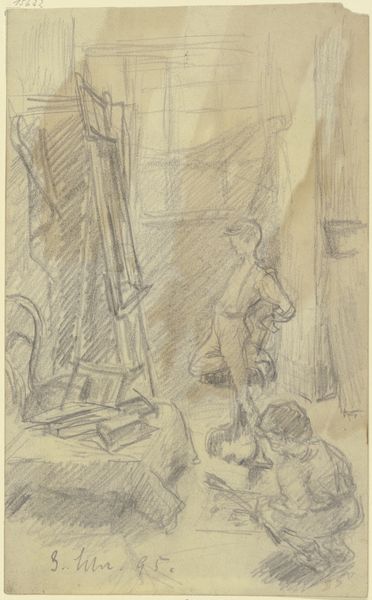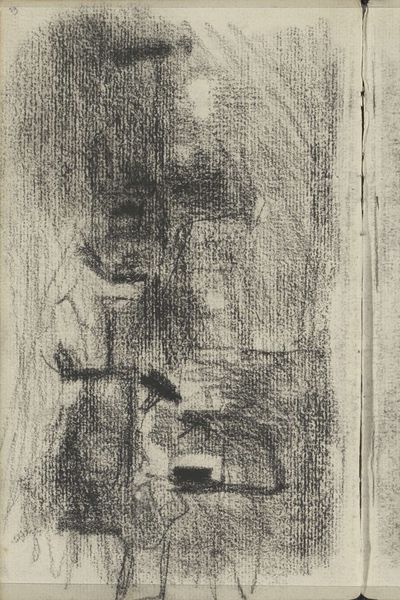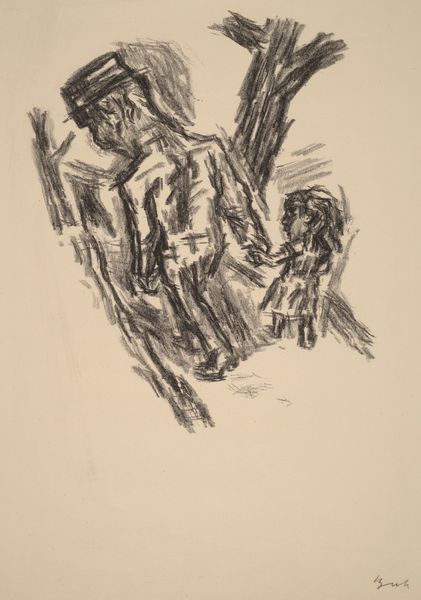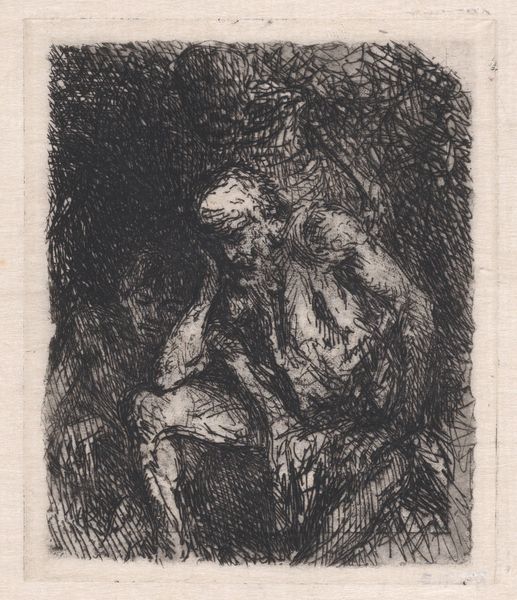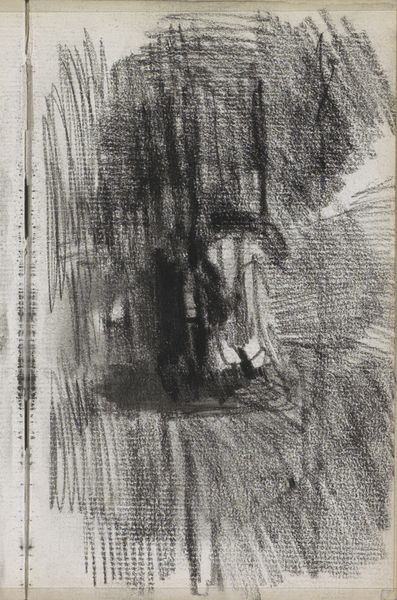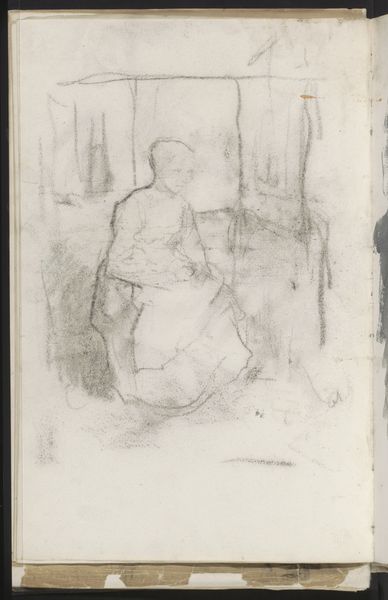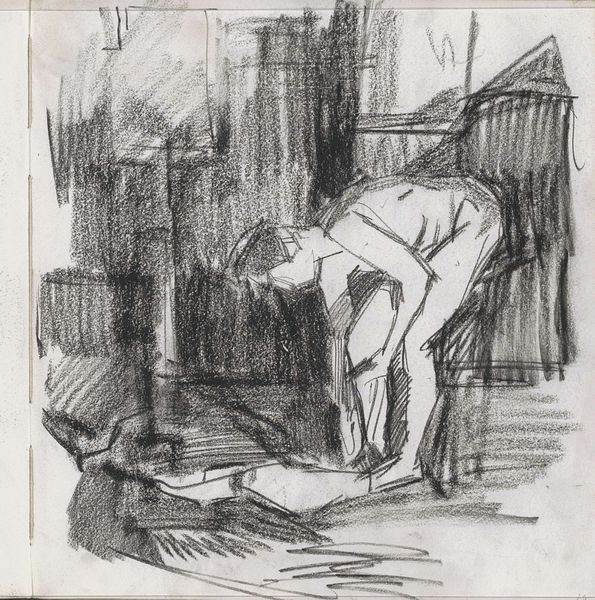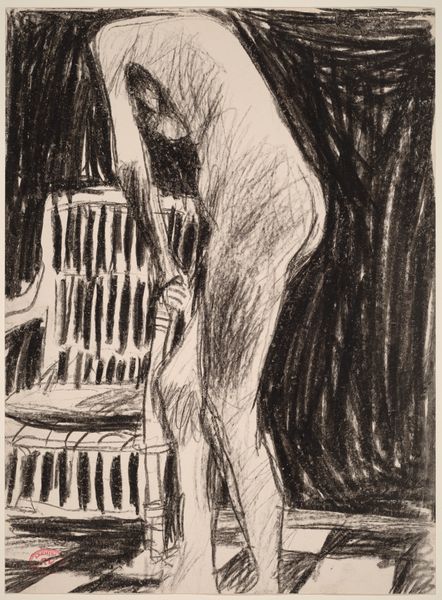
drawing, print, etching, paper
#
drawing
# print
#
etching
#
pencil sketch
#
figuration
#
paper
#
genre-painting
#
realism
Dimensions: 91 × 109 mm (plate); 111 × 135 mm (sheet)
Copyright: Public Domain
Curator: This is "Rag-Picker," an etching on paper by Charles Jacque, created around 1843. It’s part of the collection here at the Art Institute of Chicago. Editor: Immediately, I'm struck by this shadowy mood, the density of the lines, which seems almost to swallow the figures whole. It speaks to a profound sense of hardship. Curator: Absolutely. Jacque, although less celebrated than some of his contemporaries, offers us such glimpses into the lives of the working class in 19th-century France. The rag-picker, a familiar figure, symbolized the abject poverty existing alongside burgeoning industrialization. Editor: The basket carried on the standing figure's back...it’s oversized and bulky, seemingly more of a burden than just a tool for their trade. It mirrors, perhaps, the crushing weight of their social status and limited opportunities. There's something almost mythical about this portrayal; they are not just laborers but archetypes. Curator: I think the beauty here lies in its brutal honesty. Jacque doesn't romanticize poverty. He shows the reality, a difficult existence etched in these scratchy, nervous lines. It is interesting to think of how this simple scene stands against the rise of Realism as a dominant movement. Editor: It almost has a folk-tale quality, though, wouldn't you say? The two figures, one upright with his stick, the other huddled and obscured, exist within an enclosed stage that gives it all an otherworldy feel. The heavy shading and shallow depth feel so timeless to me, reminding us of cyclical nature, poverty and toil depicted here echoes through centuries. Curator: Indeed. This humble print is a testament to Jacque's acute observational skills, it captures both the physical and the emotional landscape of his time, inviting us to reflect on the ongoing struggles for dignity and survival that underpin society, both then and now. Editor: It does, doesn't it? It serves as a stark reminder of how economic disparity shapes human lives. The universality of hardship—that's what truly lingers for me after looking at it. Curator: Exactly, and its impact resides in showing dignity and offering insight, all packed into these modest, unadorned lines, leaving us contemplative long after we leave its side.
Comments
No comments
Be the first to comment and join the conversation on the ultimate creative platform.
